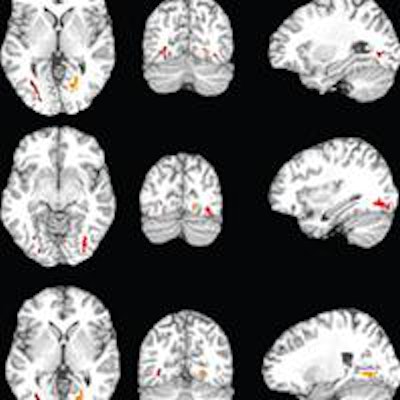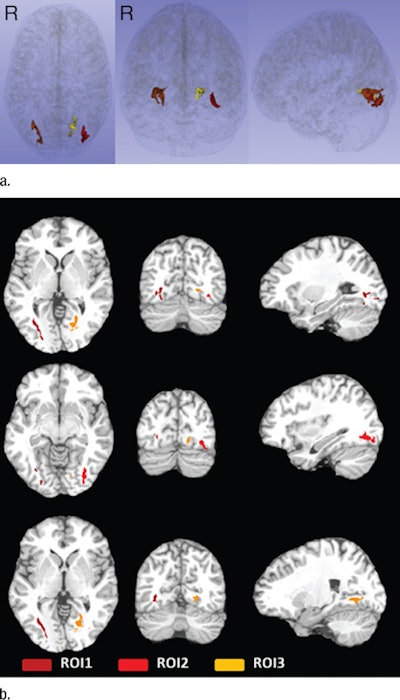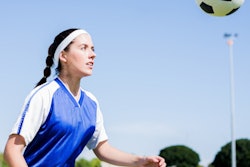
Soccer players who frequently use their heads to field the ball perform poorly on memory tests and have brain abnormalities on MRI scans that are similar to those found in patients with traumatic brain injury, according to a study published online June 11 in Radiology.
On average, players head the ball six to 12 times during competitive games, and balls can travel at velocities of 50 miles per hour or more, according to researchers from Albert Einstein College of Medicine. During practice sessions, heading drills in which the ball is headed repeatedly up to 30 or more times are common.
"If our findings are borne out in larger studies, they could have major public health implications since so many people around the world -- a quarter billion or more -- play this game," lead author Dr. Michael Lipton, PhD, told AuntMinnie.com.
The media and scientific research has focused on how multiple concussions affect players of contact sports such as American football. But the role of "subconcussive" impacts as an additional factor in cumulative brain injury has not been as thoroughly explored, according to Lipton's team.
"Heading itself entails repeated impact, acceleration-deceleration of the brain, and, perhaps depending on technique, rotation of the brain," the group wrote. "Furthermore, cumulative effects of repetitive minor injury may not manifest for many years, as in chronic traumatic encephalopathy."
Lipton and colleagues used diffusion-tensor MRI (DTI-MRI) to assess cognitive function in 37 amateur soccer players (28 men and nine women; average age, 31 years). DTI-MRI maps the dispersion of molecules, mainly water, in biological tissue; for the study, the researchers measured the uniformity of water flow (called fractional anisotropy) throughout the brain. Areas with low fractional anisotropy indicate injury, the team wrote (Radiology, June 11, 2013).
 Three regions of interest (ROI) in the temporo-occipital white matter detected by the initial voxelwise linear regression of estimated prior 12 months of heading on franctional anisotropy (FA), shown as color regions rendered in 3D images (a) and superimposed on T1-weighted axial (left), coronal (middle), and sagittal (right) images from the Montreal Neurological Institute template (b). FA at each ROI was
Three regions of interest (ROI) in the temporo-occipital white matter detected by the initial voxelwise linear regression of estimated prior 12 months of heading on franctional anisotropy (FA), shown as color regions rendered in 3D images (a) and superimposed on T1-weighted axial (left), coronal (middle), and sagittal (right) images from the Montreal Neurological Institute template (b). FA at each ROI wassignificantly lower as a function of greater heading exposure. Image courtesy of RSNA.
Study participants completed a questionnaire about the frequency of heading in the prior 12 months, and they also reported any previous concussions. The participants also underwent a sequence of computerized tests that measured psychomotor speed, attention, executive function, and memory.
Lipton's team classified the study participants into the following groups, based on the frequency of heading events per year:
- Low frequency: 276 headings or fewer per year
- Medium frequency: Between 277 and 1,095 headings per year
- High frequency: 1,096 or more headings per year
Soccer ball heading events ranged from 32 to 5,400 times in the previous year (median, 432 times). The researchers found that cognitive performance decreased after a threshold of 1,800 headings per year. In addition, the heading-event threshold for imaging measures was lower than the threshold for negative effects on memory: Imaging measures showed changes in tissue that preceded cognitive signs of injury at thresholds of 900 to 1,500 heading events.
Lipton's group found that the location of the players' brain abnormalities were opposite the point of heading impact, which the team interpreted to the phenomenon of "contrecoup injury" -- damage that occurs opposite the site of impact.
"It's known that in more severe traumatic brain insult, there may be an injury right under the site of impact, as well as an additional injury 180° from it," Lipton told AuntMinnie.com. "In fact, the amount of bruising can be larger in the contrecoup location."
How could this type of cumulative brain injury be avoided? Lipton's group suggested using "head counts," much like "pitch counts" in baseball.
"Prospective monitoring of exposure at the team level ... could identify a point at which a player's heading should be curtailed for a certain recovery period," the team wrote.



.fFmgij6Hin.png?auto=compress%2Cformat&fit=crop&h=100&q=70&w=100)





.fFmgij6Hin.png?auto=compress%2Cformat&fit=crop&h=167&q=70&w=250)











